Technology is changing quickly, and it seems like there is something new every day. It can be intimidating to try and keep up with all the latest tech news, let alone implement it for your business. Brands often struggle with where to put their resources, what to invest in, and how to implement new technologies to be on the cutting edge. When there are so many directions to go, how does one know which path is correct?
In my previous blog, I discussed what methodologies compel consumers to act. Simply put, the answer lies within the experience. You can pivot your marketing strategies in several ways to stand out from the competition. Now, I’d like to focus on the specific technologies we’ve used that have proven high customer engagement.
Let’s go over the top six technologies that are worth your time and how we’ve implemented the different technologies with major brands. That way, you can learn how you can implement these technologies yourself.
Let’s Refresh the Now, New, and Next
As you may recall, “The Now” is what 70% of your competition is doing. This includes basic experience and can be a huge miss if not done correctly. This includes mapping out your customer’s journey, identifying motivations and resistance areas, and developing your brand across multiple platforms.
The “New” and “Next” part of the framework is where you can push your business to new heights. According to our research, only 20% of your competition implements the “New” in their business model, meaning they have content personalization, product features based on targeting, in-depth search engine optimization (SEO) with paid media, optimized experiences on each device, and advanced analytics.
Only 10% of the framework implements the “Next” part of the framework, where the return on investment (ROI) is unproven, and experimentation, innovation, and differentiation are key. This area has great potential for first-to-market advantages.
With only 30% of the competition implementing the “New” and “Next” frameworks, one might ask, why is this so important?
Here are a few facts to consider:
- More than 11,000 store closings were announced in 2020. (CoStar Advisory Services)
- The COVID-19 pandemic has accelerated the shift away from physical stores to digital shopping by roughly five years. (IBM Retail Index)
- Conversion rates increased by 250% when customers consumed 3D products in AR. (Shopify)
To capitalize on these facts, businesses should quickly adapt and evolve. More and more businesses are digitizing their storefronts instead of utilizing brick-and-mortar stores. By creating direct ties between your digital and in-store experiences, you will build deeper engagement. Now that we’ve reviewed these frameworks check out our top six proven experience solutions below.
Six Proven Experience Solutions
There are many ways to use digital to enhance the physical to elevate your products and give you more dynamic display opportunities. Here are our top picks on how you can enhance your customer engagement.
- Augmented Reality (AR) / Virtual Reality (VR)
- Wayfinding
- Smart Spaces
- Projection-Mapping
- Artificial Intelligence
- Immersive Storytelling
Perficient has helped many businesses adapt to the “New” and “Next” framework by implementing these experience solutions. Below are examples of how we could create a new solution by utilizing these technologies.
Case Study: Microsoft – Smart Spaces
Microsoft needed to help their sales associates have better conversations with their customers and produce more sales, so we used Smart Spaces technology to help create a smart store concept for their retail experience center. Using this new system, sales associates can make recommendations to a customer based on a variety of factors they may not be initially aware of, including a customer’s dwell time in the store and the purchase history of the customer. We built a network to track customers within the store and an app with a dashboard that allows sales associates to read heat maps for hot items and purchase history for users, ultimately helping sales associates better understand and align to the customer’s needs.
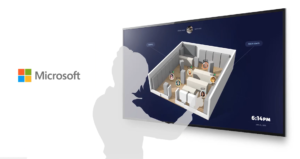
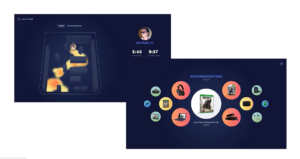
Case Study: Wacoal – Artificial Intelligence
Wacoal is a manufacturer of intimates for women. After COVID-19 decreased in-store foot traffic, Wacoal needed to escalate its digital experience and tasked us to find a way to digitally deliver its expert, in-store bra fittings.
We developed the MyBraFit app, a first-of-its-kind artificial intelligence-based experience which allows customers to accurately size themselves to find the perfect bra fit from the comfort of their own home. You can be given personalized product results in minutes by simply setting up the app, adding some measurements, and doing a quick scan of your body shape.
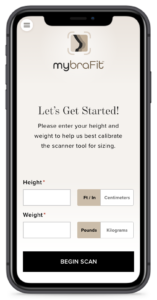
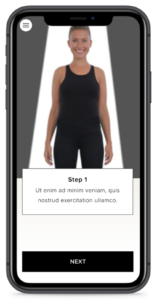
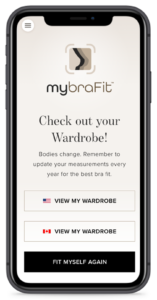
Case Study: Everyday Carry AR – Augmented Reality (AR)
Everyday Carry AR is an app we developed that allows customers to bring an AR version of a physical product home without purchasing it. For example, if a customer was at a store, they could add an item to a wish list and virtually visualize the products at home using the app with the physical products you’ve already purchased. It can compare clothing with what you have at home and your fashion accessory size, measure home goods on counter space, décor on your walls, or car shopping. There are many retail possibilities by helping a customer visualize their purchase and ensure they are purchasing what they truly want.
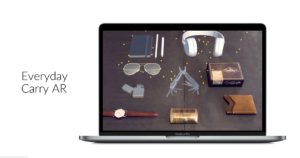
Final Thoughts
When a business is in the “Next” category and exploring cutting-edge technology, it’s important to remember there are many ways to measure ROI, and the goal of innovation is to prove a piece of technology. Many businesses are hesitant to try new technologies due to the risk of ROI. In our experience, we encourage businesses to fail fast. That way, you can learn and adapt quickly.
We can help you put together these proofs of concepts with our digital strategy, experience design, digital marketing, and commerce experts. They will talk you through how you can elevate your business beyond the “Now” framework and break into the “New” and “Next” tiers.
I encourage you to check out our roundtable session of “Beyond the Buzzword” called “Realize Active Customer Engagement Through Experience-Driven Commerce” where we go into more detail about the case studies above.
On my previous blog, I discussed which methodologies compel users to act and encourage you to check it out as well.
For any other questions, contact our experts today.

